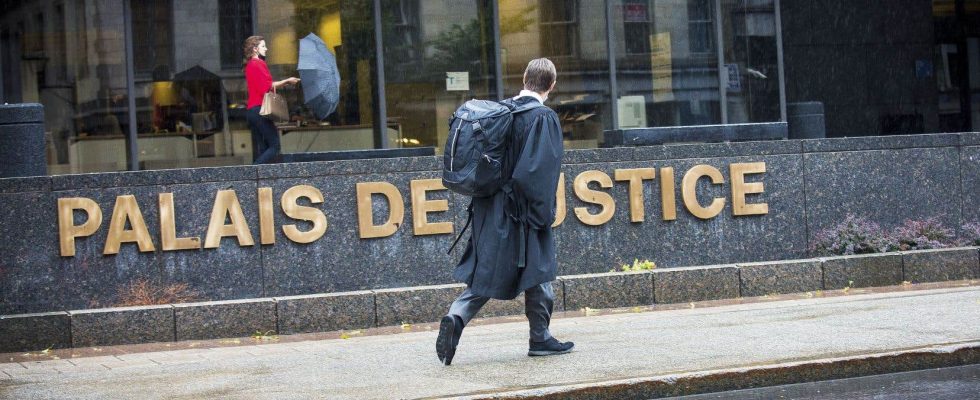Since the arrival of the Coalition avenir Québec in power in 2018, three judges from “cultural communities” have been appointed to the Court of Quebec out of a total of 63 appointments, reveals a compilation of the Duty. Even if these data show a slightly downward trend, the office of the Minister of Justice says it is “very sensitive to this concern”.
Four members of cultural communities became judges in 2016-2017, the first year for which data was available. But since then, their number has dropped: it reached a maximum of two in 2020-2021. In 2019-2020 and 2021-2022, no judge from diversity was among the 23 appointments to the Court of Québec.
In total, since the election of the Legault government in October 2018, less than 5% of appointments by the Minister of Justice have allowed members of cultural communities to access the highest offices of the Court of Quebec.
It is difficult, however, “to establish with certainty the number of judges or candidates from diversity”, underlines the office of the Minister of Justice, Simon Jolin-Barrette. As Martine L. Tremblay, Associate Chief Justice of the Court of Quebec (Civil Division) also points out, membership in these communities is self-declared. “Therefore, these data cannot be considered entirely reliable,” argues the firm.
Justice Tremblay also wonders about the notion of cultural community, that is, the attribute of the box to be selected during applications. “Is it the first generation immigrants, is it the Jews, is it the English speakers? Judge Peggy Corbel Warolin, in Abitibi, is very proud to say that she is Belgian and Judge Hermina Popescu, in Eastern Quebec, is very proud to say that she is of Romanian origin. And when you speak to Judge Popescu, the accent is notorious”, explains the magistrate during a telephone interview with The duty.
This definition is also the subject of debate within the selection committees themselves. “I had a situation where the person was a Caucasian immigrant and claimed the status of cultural community,” she says. “The person on the selection committee, herself from a cultural community, said: ‘Let’s see! She cannot be discriminated against.
According to Justice Tremblay’s count, 33 of the 289 judges serving at the Court of Quebec represent “cultural diversity.” This diversity “may not be black, may not be racialized, but 33 judges out of 289 is still not nothing,” she underlines. According to her, the judiciary must reflect society. “But when you are a judge, you have to be impartial and neutral. »
A deficit “
Candidates for the position of judge at the Court of Québec are first identified by a selection committee, which then provides three names to the Minister of Justice so that he can recommend a candidate to the cabinet.
This procedure is included in the regulation on the selection of candidates for the position of judge, under review in Quebec. This provides that the members of the selection committees receive training to be “aware of the objective of promoting gender parity […] as well as the representation of cultural communities within the judiciary”.
” [Mais] we agree there, it’s not a black man you need, it’s a judge, argues Judge Tremblay. On the other hand, for equal quality, we must be sensitive to the need to have black, Innu or Asian lawyers” among the judges selected.
In the opinion of deputy judge Daniel Dortélus, the regulations do not provide any “concrete provision to make room for diversity” among judges.
In March 2022, the magistrate – who is black – sent a letter to the Minister of Justice asking him to fill the “deficit” in terms of diversity in the judiciary. He lamented that after decades of representations, the issue “still remains relevant in 2022”.
In 2020, for example, he wrote to the chief justices of the Court of Quebec wishing that “the wind of openness” shown by the appointment of eight women by Ottawa to the bench of Ontario, including several visible minorities, “reaches Quebec “.
According to data compiled by The duty, appointments of people from cultural communities are generally more numerous at the federal level. For example, last year more than one-fifth of judges appointed to superior courts (13 of 58 appointments) self-identified as “visible minorities”.
The government of Justin Trudeau has also appointed two justices from diversity to the Supreme Court, the first non-white judge, Mahmud Jamal, in 2021 and the first indigenous judge, Michelle O’Bonsawin, last summer.
In an email exchange with The dutyJustice Dortélus proposes that the regulation on the selection of candidates for the office of judge at the Court of Québec be amended so that “one or both members representing the public [dans le comité de sélection] come from minority and racialized groups, which remain under-represented on the verge of exclusion in 2023”.
He adds that without the diversification of committees, “the vicious circle of exclusion of lawyers from minority groups will continue, despite the principles of the right to equality”.
A shared problem
According to Justice Tremblay, the lack of diversity within the judiciary is a reflection of that of universities and the Bar. “They would first have to study law, that’s where the sinews of war lies. Afterwards, they would have to stay in the profession for at least ten years,” she says.
Ten percent of members of the Barreau du Québec were Indigenous or identified with an “ethnocultural group” in 2020-2021. Le Barreau-mètre 2022, which portrays the profession in statistics, points out that the proportion of lawyers who self-identify with a minority group (including sexual minorities and those with disabilities) has increased from 8% in 2014-2015 to 13% in 2020-2021.
However, Minister Jolin-Barrette’s press attaché, Élisabeth Gosselin, points out that “few lawyers from diverse backgrounds submit their candidacy to the judiciary”. The Bar of Montreal has also set up a committee to look into issues of lack of diversity. “We are following this work closely,” says Ms.me Gosselin.
With Dave Noel
